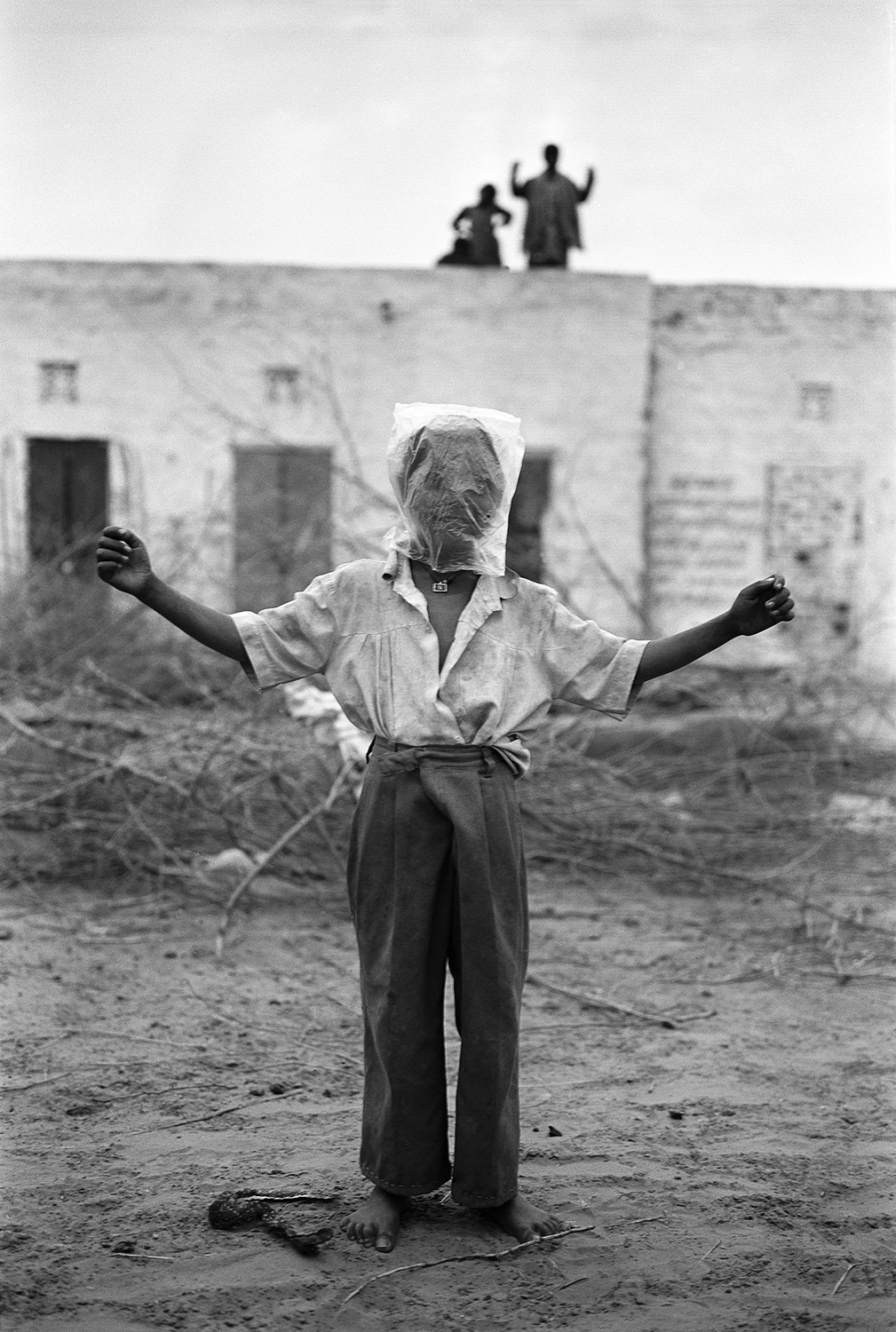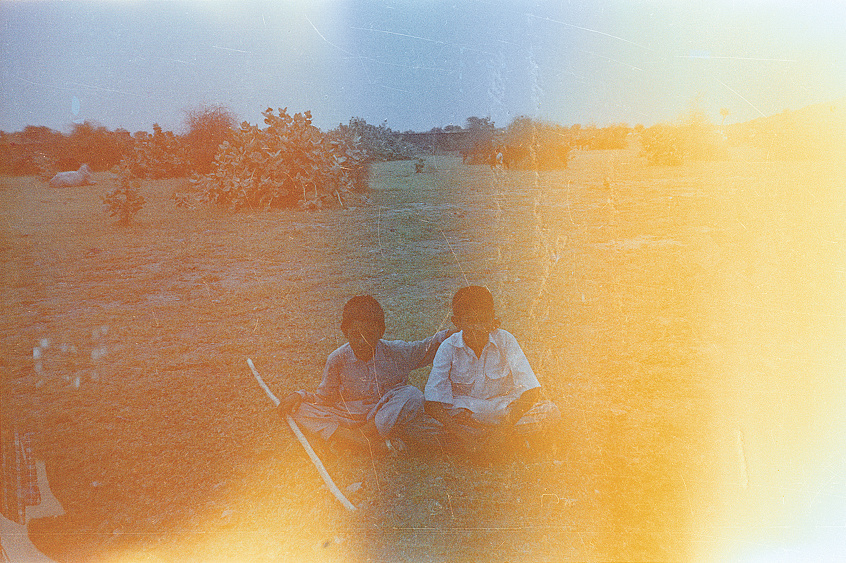Hooran balances precariously on a jagged rock in Barmer, Rajasthan. Her hands are curled up like claws, and her gaze is fearsome. Mir Hasan clutches the body of his bedridden grandfather, Haji Saraj ud Din, and looks to the camera. These affecting photographs belong to “Notes from the Desert” (1999– ), part of Gauri Gill’s project to record the lived experiences of rural and migrant communities across the arid topography of Rajasthan, in Western India’s border terrain.
Taken during accumulated visits to the region, her archive of gelatin silver photographs write a history of intimate celebrations and shadows of loss, familial struggle, seasonal calamity, nomadism, and rural education. The making of the desert in a photograph is a sedimentary act; its residual logic relies on particles built up of trust, storytelling, and bearing witness. Gill frames a mode of being-in-common: refuting ethnography in favor of allegiance and companionship. The only color photographs in the archive, titled “Ruined Rainbow Pictures,” were shot by children learning photography, who discarded them as failed experiments. Gill salvages these light-leaked negatives and prints them as a set of serendipitous and playful encounters.
Gill’s lens regards classroom walls illustrated with diagrams, maps, charts, anatomical drawings, and political emblems—a visual grammar of collective learning marking the legacy of Leher Kaksha, a now-lapsed state scheme which created visual tools for the education of children. Gill, who was born in Chandigarh in 1970, worked as a photojournalist before shaping a more expansive and collaborative process, and journalistic scrutiny has given way to a poetics of survival in which small acts of freedom are reason to rejoice. Take Balika Mela (2011), her book of portraits of young rural women taken in a tented studio, or her work foregrounding the lives of female protagonists such as Izmat and Jannat in image and word sequences that inscribe a mnemonic space and biographical journey across the desert.
“Fields of Sight” (2013–16) is coauthored with third-generation Warli artist Rajesh Vangad, who lives in an Adivasi village in Dahanu, Western India. Gill’s black-and-white photographs plot landforms and village developments while observing her artist-collaborator as he guides her through his homeland. Vangad provides a second, complementary narrative—ink drawings in Warli iconography that traverse forested rivers, animist ritual, rare botanical species, a sky full of birds, and billowing chimney smoke from a local factory.
—Natasha Ginwala



